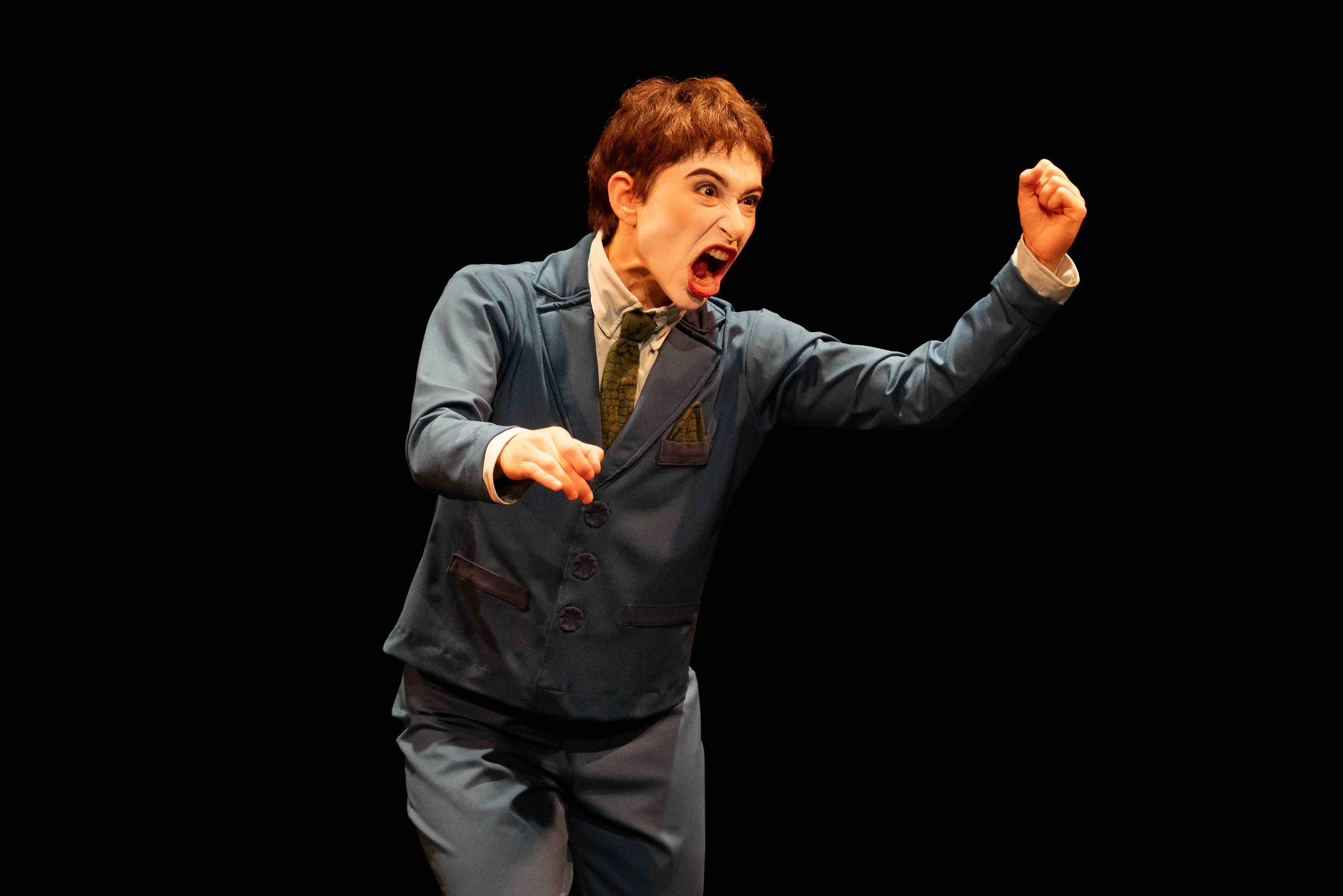Stir Q&A: composer-musician John Millard helps the animals sing in The Cave
In the climate-crisis cabaret, show creators give voice to the species who are suffering
John Millard, Andrea Koziol, Derek Kwan, and Alex Samarash in The Cave. Photo by Delal Hagos
TORONTO COMPOSER John Millard is your MC for The Cave, an animal-centred, climate-crisis cabaret streaming via the Cultch from January 22 to 24.
The artist, an accomplished musical director who also plays with the bands The Polka Dogs and John Millard & Happy Day, also helped conceive the J Mar Electric show with Martha Ross and Tomson Highway. It was a hit at last year’s Luminato Festival in T.O, where it was pre-recorded.
In the production, a group of animals flee a vicious forest fire and seek refuge in Bear’s cave.
Stir recently asked Millard about writing music for animals, the origin of banjos, and more.
We've heard this show called everything from an apocalyptic cabaret to an interspecies song cycle. How do you describe it to your friends?
”At the risk of sounding flippant, I tell them that it’s a cool thing I did with my friends. Marketing for a show is weird because you are looking for the right words to describe something that took a long time to create. In truth it is a cabaret in the classic sense that there is an master of ceremonies and a variety of musical performances that try to reflect on our current situation in a larger context.”
At what point in the creative process did you decide the animals should speak for themselves, and how did you approach that musically? How does a bear or moose "sing"?
“Martha, Tomson, and I talked about how many Canadians have had close-up encounters with interesting animals and many of us are capable of identifying with them. Many of us work like beavers; I have certainly lashed out like a crabby bear and wandered off to be alone like a moose. Bear, Moose, Raven, Whiskey Jack, Crow, Fox, Wolf, Lynx; they all describe aspects of being Canadian—also our money with loons, beaver, moose, elk, bear, etcetera. We wondered what they would sing about if they were in a cabaret—what opinions would they have about the world we live in.
“It began as a song cycle where the different animals sang. Then when we thought about staging it we came up with the idea that it be in a cave or a nightclub called The Cave. When we asked the question ‘Why are the animals all together?’, we came up with the idea that they were taking shelter from a forest fire together in The Cave. It seemed to answer enough questions to let us get to work on creating the characters and the plot.
“Animals cannot sing. We artists are to imagine what the creature’s experience is, put it in language we can understand and share.”
Does the fact they're animals allow you to get away with things you might not otherwise about our climate crisis?
“Perhaps. Because the animals are not complicit at all in our shenanigans, they are quite free to express themselves about being the victims of human greed. It gives the audience an opportunity to be empathetic to the animals and feel deeply the plight of our fellow creatures.”
John Millard in The Cave. Photo by Delal Hagos
You have a long history of working in both theatre and music. How do they compare and is there one you feel more comfortable in?
“I do concert music and I do theatre music. It’s always music but in different contexts.
“Music on its own can be extremely freeing to play. A concert or set can have a wide-open shape or direction that can vary from gig to gig. There isn’t as much opportunity for that to happen in the context of theatre music. Perhaps because it has so many moving parts, you stick to the plan. One doesn't go anywhere new or unexpected but you can really get where you are going!
“Theatre is more theatrical—haha! What I love about doing music for theatre is that when it works, you can be completely uplifted by the interplay between the plot narrative and musical structure. They work together to create a remarkable suspension of disbelief.”
How many banjoes do you play in the show, and how many do you own? What's our biggest misconception about the instrument?
"I play two banjos in the show. I own four but could use a few more. Hmmm. I’m not sure if it is common knowledge but the banjo takes it’ lineage from a number of African instruments, one of which is the banjar. It has an efficient and interesting structure that is possible to create with materials at hand. Perhaps this is why as a slave instrument, it made the transition to a sort of working-class instrument. While it was developed in North America, it has its roots elsewhere. I love the sound of it with a human voice."
The Cave streams from January 22 to 24; find more info here.














